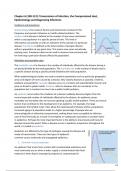Samenvatting
Summary Keuzevak Infectieziekten pre-master Health Sciences blok 6
Hierbij de samenvattingen van het keuzevak infectieziekten van de pre-master Health Sciences aan de VU. Met de totale samenvattingen haal je een goed cijfer voor het tentamen infectieziekten.
[Meer zien]














